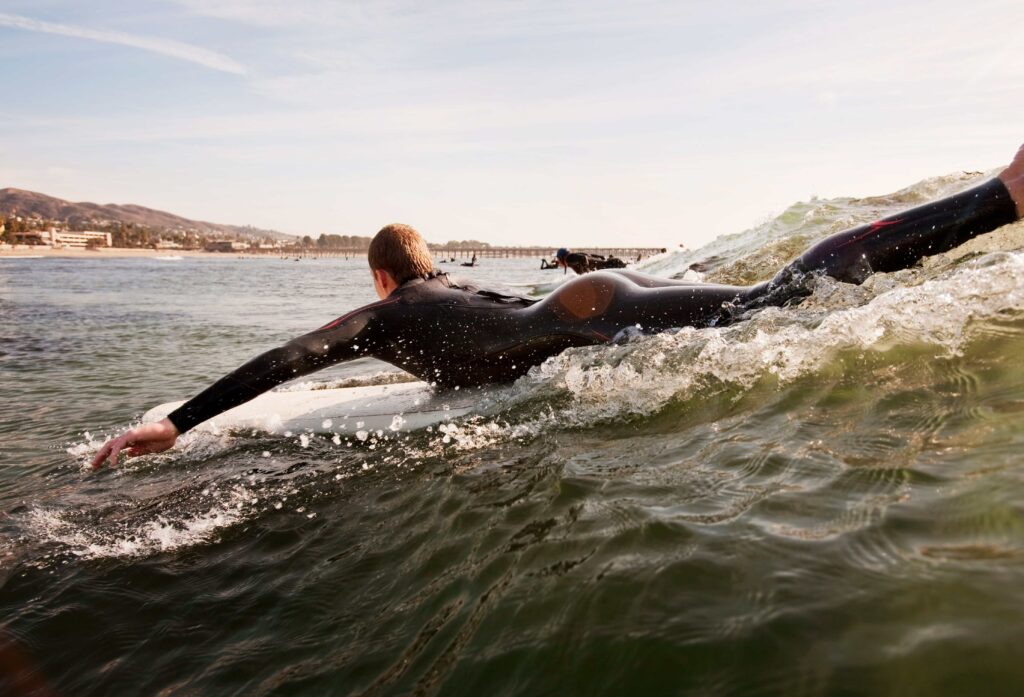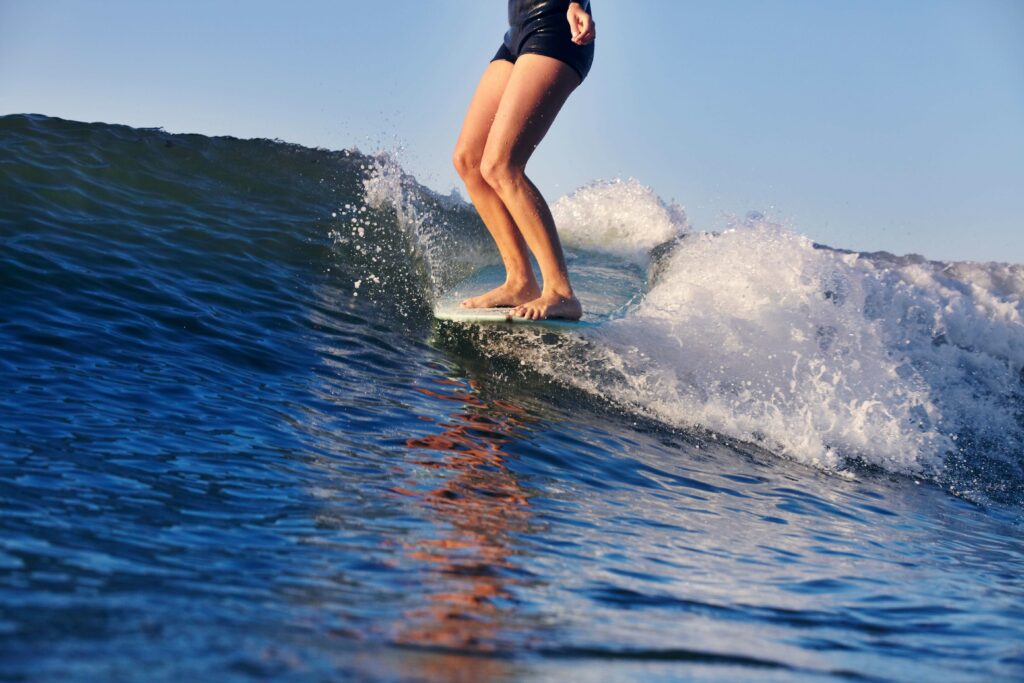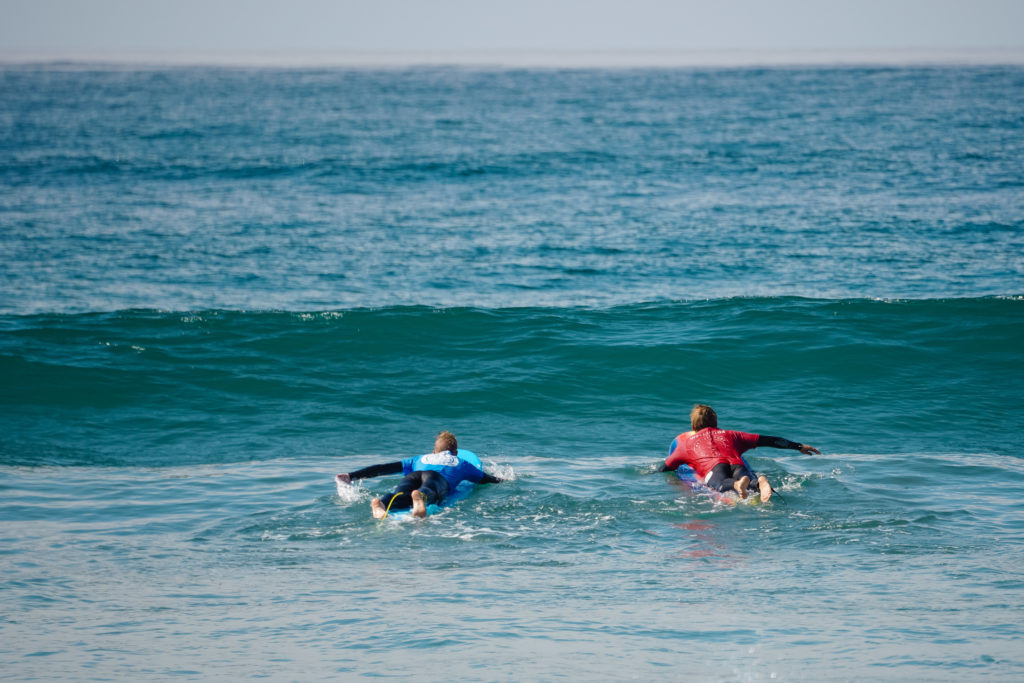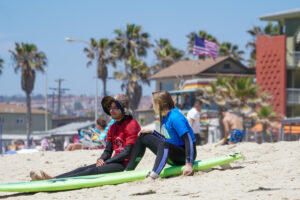Tips & Tricks to Perfect Your Drop-In Technique
Dropping in on a wave is an exhilarating experience, but it can also be intimidating for beginners. Learning how to drop in on a wave requires patience, practice, and confidence, however, with the right technique and practice, anyone can learn how to drop in on a wave and ride it like a pro.
In this blog post, we’ll discuss the steps you need to take to drop in on a wave and provide some tips and tricks to help you improve your technique. Let’s get started!
Understanding The Ocean
Understanding the ocean is essential for any surfer who wants to be successful in the sport. The ocean can be unpredictable and ever-changing, so it’s important to understand its patterns and movements. By observing the ocean, you can learn about its swells, tides, currents, and more.
This knowledge will allow you to make safer decisions when surfing in unfamiliar waters. Additionally, understanding the ocean will help you better anticipate which waves are likely to break where and when they are most powerful.
Being aware of these factors will help you take off on cleaner waves with bigger faces that offer longer rides. Understanding the ocean is a key component of becoming a proficient surfer so make sure to take time to observe it before paddling out into the lineup!
Analyzing the Current Conditions
Before paddling out, surfers should take into account factors that could affect their ride such as wind direction and strength, the size and shape of the waves, and any obstacles or rough patches in the water. Additionally, surfers should pay attention to any current changes that could occur throughout the session and be prepared to adjust their approach accordingly. Lastly, surfers should analyze the overall environment for any potential safety concerns such as rip currents or shallow rocks.
Reading the Surface of the Water
While out in the lineup, surfers should be on the lookout for subtle signs that can indicate changes in wave size or shape. This includes observing swell lines and recognizing when waves are beginning to form or break. Additionally, surfers should be aware of any obstacles like rocks or coral that might be lurking beneath the surface.
By reading the surface of the water, surfers can make informed decisions about which waves they choose to drop into and where they position themselves within a wave’s line-up.
Understanding the Waves
Before you can drop in on a wave, you need to understand how waves work. Waves are formed by wind blowing over the surface of the ocean, creating a disturbance that travels across the water. As the wave gets closer to shore, it encounters the ocean floor, causing it to break and form a crest or peak.
The wave can then be divided into 4 different parts: the peak, the face, the shoulder, and the trough. The peak is the highest point of the wave, while the face is the sloping section of the wave that surfers ride. The shoulder is the part of the wave that’s not breaking, while the trough is the low point between two waves.
It’s important to choose the right wave to drop in on. Look for a wave that’s breaking cleanly and doesn’t have any other surfers on it. It’s also important to consider the size and speed of the wave – smaller waves are easier to drop in on, while larger waves require more skill and experience.
Identifying the Best Waves to Drop Into
An experienced surfer can often recognize a good wave from far away and make the decision to paddle towards it. When evaluating a potential wave, surfers should consider factors such as the size of the wave, its shape and angle, and how clean the face is. Additionally, surfers should take into account any wind conditions that could affect their ride.
By paying attention to these details, surfers can select waves that are more likely to offer longer rides with fewer obstacles or rough patches. Experienced surfers may also be able to identify sections of the wave that will offer better opportunities for tricks or maneuvers.
Preparing to Drop In
To drop in on a wave, you need to be in the right position and have good timing. Paddle out to the lineup, where the waves are breaking, and position yourself slightly to the side of the peak. You should be facing the shore with your feet hanging off the back of the board.
When you see a wave approaching, start paddling towards the shore. As you get closer to the wave, turn your board towards the peak and start paddling towards it. Once you’re in position, wait for the right moment to drop in.
Dropping In On A Wave
When you’re finally ready to drop in on the wave, position yourself on the board with your feet shoulder-width apart and your front foot slightly forward. Your back foot should be positioned over the fins of the board for stability.
As the wave approaches, angle your board down the face of the wave and shift your weight to your front foot. Your aim should be to catch up with the wave just before it breaks so that you can drop in without any trouble. Keep your eyes on the horizon and maintain your balance as you ride down the face of the wave – this will help you judge when to begin your take-off.
It’s also important to stay relaxed and focused as you ride the wave. Don’t tense up – keep your body loose and flexible. Maintain your gaze on the horizon and keep your weight forward to maintain your balance.
Remember the Drop-In Rule!
The Drop-In Rule is one of the most important rules for surfers to understand and follow. When dropping in, the surfer closest to the peak of the wave has priority—this means they have right of way and should be allowed to take off on the wave. This rule applies even if another surfer is already up and riding; in this instance, it’s important for the surfer who dropped in first to give way to the one who was already up. Additionally, it’s generally considered bad form to paddle around someone else who is already waiting for a wave and then try to drop in on them instead.
This rule ensures that all surfers have fair access to waves and prevents any potential conflicts between them.
To ensure that everyone follows this rule, it’s important to always be aware of your surroundings when paddling out and keep an eye out for other surfers before you drop in on a wave. Additionally, it’s important to respect other surfers by giving them priority when they’re closest to the peak of the wave and waiting until they have finished their ride before initiating your own. Following these guidelines will help create a safe, positive atmosphere for all who choose to participate in this incredible sport!
Timing, Positioning, Speed, and Approach
When it comes to dropping in on a wave, timing, positioning, speed, and approach all make up the essential elements of perfecting your drop-in technique. Achieving success with each of these elements will help you safely and effectively enter into the wave and ride with confidence.
Practice makes perfect when it comes to dropping in on a wave. The more you do it, the better you’ll get. Start with smaller waves and work your way up to larger ones as you gain more experience.
Time Your Move with Respect to Time & Tide
Timing your move with respect to time and tide is an important factor in successful surfing. Knowing when the wave will break, as well as the speed and direction of the current, can help you drop in more accurately and ride longer.
To start, it’s important to pay attention to tide charts and local wave forecasts before heading out—this will give you a good idea of when waves will be best. Additionally, try to stay aware of how fast the wave is moving while paddling—it should take no more than a few seconds for you to catch up with it.
Finally, practice makes perfect! With consistent trips out into the waves, surfers will learn exactly how much time they need between paddling out and dropping in. This way, they can ensure that their timing is always perfect for each ride!
Control Your Speed as You Paddle Out
Controlling your speed as you paddle out is an essential part of surfing. Going too fast can cause you to overshoot the wave while going too slow can leave you stranded in the impact zone.
To maintain a steady and controlled speed, it’s important to keep your arms close to your body and your paddle strokes short and powerful. Make sure to take deep breaths between each stroke to keep yourself from getting too tired. Additionally, paddling with a dolphin kick is a great way to move quickly without expending too much energy.
When paddling out for a wave, focus on maintaining a steady pace and breathing steadily so that you are well-positioned when the wave arrives. With practice, surfers will become more comfortable with their paddling technique—ensuring they catch the waves they want!
Angle Yourself Toward the Wave’s Peak
Angling yourself toward the wave’s peak is an essential part of surfing. By angling your body and board properly, you can maximize your speed and catch the wave at its most powerful point.
When paddling for a wave, tilt your board slightly towards the oncoming swell to increase speed. This will help you catch the wave before it begins to break, allowing you to drop in with more control and power. Additionally, be sure to keep your eyes focused on where the wave is breaking—this will ensure that you are properly angled at all times.
Finally, practice makes perfect! With enough time spent in the water, surfers will learn how to accurately angle themselves towards the wave’s peak each time they paddle out—ensuring they get ready for each ride!
Common Mistakes and How to Avoid Them
When dropping in on a wave, there are common mistakes that many novice surfers make. The following are the top mistakes that beginner surfers make when dropping into a wave and tips on how to avoid them.
1. Looking Down at the Board
One of the most common mistakes that beginner surfers make when dropping into a wave is looking down at the board. When you look down, your weight shifts forward, and you lose balance, which can cause you to wipe out. To avoid this mistake, keep your gaze forward and focus on the direction you want to go.
2. Not Paddling Enough
Another common mistake is not paddling enough before dropping into a wave. Without enough momentum, you won’t be able to catch the wave, and you’ll miss the opportunity to ride it. To avoid this mistake, paddle vigorously towards the wave and increase your speed just before dropping in.
3. Standing Up Too Early
Standing up early is a mistake that even experienced surfers make. If you stand up too early, you won’t have enough speed or momentum to ride the wave, and you’ll end up falling off. To avoid this mistake, wait until you feel the wave lift you up before standing up.
4. Leaning Back
When dropping into a wave, it’s important to distribute your weight evenly between your front and back foot. Leaning back can cause you to lose momentum and balance, which can lead to a wipeout. To avoid this mistake, keep your weight centered and shift it forward as you ride the wave.
5. Not Compressing
Compressing your body is an essential part of dropping into a wave. When you compress, you lower your center of gravity and increase your speed, which makes it easier to ride the wave. To avoid this mistake, bend your knees and crouch down just before dropping in.
Learn How To Drop In With Pacific Surf School
Dropping in on a wave can be an incredibly thrilling experience – just remember to stay safe and be mindful of other surfers around you. With these tips and tricks, you’ll be surfing like a pro in no time!
If you’re still struggling to drop in on a wave, consider taking a lesson with Pacific Surf School. Our experienced instructors can teach you the proper technique and provide personalized feedback to help you improve your skills. We offer private, semi-private, and group lessons for all levels of surfers, from beginners to advanced.
In addition to learning how to drop in on a wave, we also teach you about ocean safety, wave selection, and proper board positioning. Our lessons are designed to help you become a confident and competent surfer.
Contact us today to sign up for a surf lesson in any one of the following locations: San Diego, Pacific Beach, Manhattan Beach, Huntington Beach, Mission Beach, Santa Cruz, La Jolla, Santa Monica, Los Angeles, and more. We look forward to seeing you out on the water!
FAQs
To prevent accidents and ensure a safe surfing experience, it’s crucial to follow certain etiquette rules when dropping in on a wave.
- Stay aware of your surroundings while paddling out.
- Keep a safe distance from other surfers and drop in further down the line to avoid collisions.
- Respect the pecking order established by more experienced surfers.
- Communication is essential in avoiding accidents; always look around and apologize if you accidentally drop in on someone.
Timing the drop-in on a wave correctly is essential for a successful ride. Here are some tips to help improve your timing:
- Positioning: Before dropping in, you should position yourself in the right spot on the wave. Look for the peak or the steep part of the wave and position yourself just in front of it.
- Reading the wave: Observe the wave’s behavior before attempting to drop in. Try to anticipate the wave’s movement and timing.
- Paddle hard: Paddle as hard as you can to match the speed of the wave. This will help you catch the wave and make the drop-in easier.
- Look down the line: Once you have caught the wave, look down the line towards where you want to go. This will help you maintain your balance and control your speed.
- Commitment: Don’t hesitate once you’ve decided to drop in. Commit to the drop-in and maintain your focus until you have completed the ride.
Some common types of waves that are good for practicing dropping in include:
- Spilling waves: These are the most common types of waves and are ideal for beginners to practice on. They break slowly and have a long, gentle slope.
- Rolling waves: These waves have a slightly steeper face than spilling waves, making them a good option for intermediate surfers to practice on.
- Reef waves: Reef waves break over coral reefs and have a steeper, more powerful face. These waves are suitable for advanced surfers and require a high level of skill and experience.
Dropping in on a wave can be dangerous, and it’s essential to keep the following safety considerations in mind:
- Look out for other surfers: Before dropping in, make sure to check for other surfers in the area. Avoid dropping in on someone else’s wave, as it can lead to collisions and injuries.
- Protect your head: Wear a surf helmet to protect your head in case of falls or collisions.
- Know your limits: Avoid waves that are beyond your skill level. Trying to catch waves that are too big or fast can result in injuries.
- Respect the environment: Always surf in designated areas and avoid surfing in protected marine areas or around wildlife.
- Use proper equipment: Make sure to use the right surfboard and leash for your skill level and the wave conditions. Faulty or poorly maintained equipment can lead to accidents.








